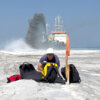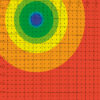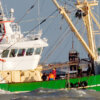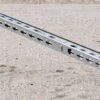Surveillance or BACI monitoring (Before-After-Control Impact) assesses temporal and spatial changes to parameters before and during the dredging works.
Selecting parameters
Surveillance or BACI monitoring compares selected parameters of the prior condition (before dredging) and the current condition (during dredging). This type of monitoring is the most frequently used and the simplest to design.
Environmental impact studies done prior to the dredging work will have identified and predicted the impact on the relevant parameters for the Surveillance/ BACI monitoring programme.
Hypotheses
This type of monitoring programme aims to verify the hypotheses developed during project preparation. These hypotheses can vary depending on the project, but in general relate to:
- oceanographic/ estuarial conditions at the dredging or relocation site (e.g. current, wind, waves, depth);
- environmental background conditions at the site (e.g., suspended sediments, salinity, existing contamination level); or
- operational parameters related to the dredging equipment (e.g., suspended sediments from overflow with a trailing suction hopper dredger, accuracy of the selected dredging equipment, turbidity generation at the dredging site).
Especially during the first phases of a project’s execution BACI monitoring can check the validity of the assumptions used as a basis for the project planning. It will allow the contractor and owner of the project to adapt the execution methods or choice of dredging equipment if assumptions prove incorrect or unexpected impacts are detected.


















